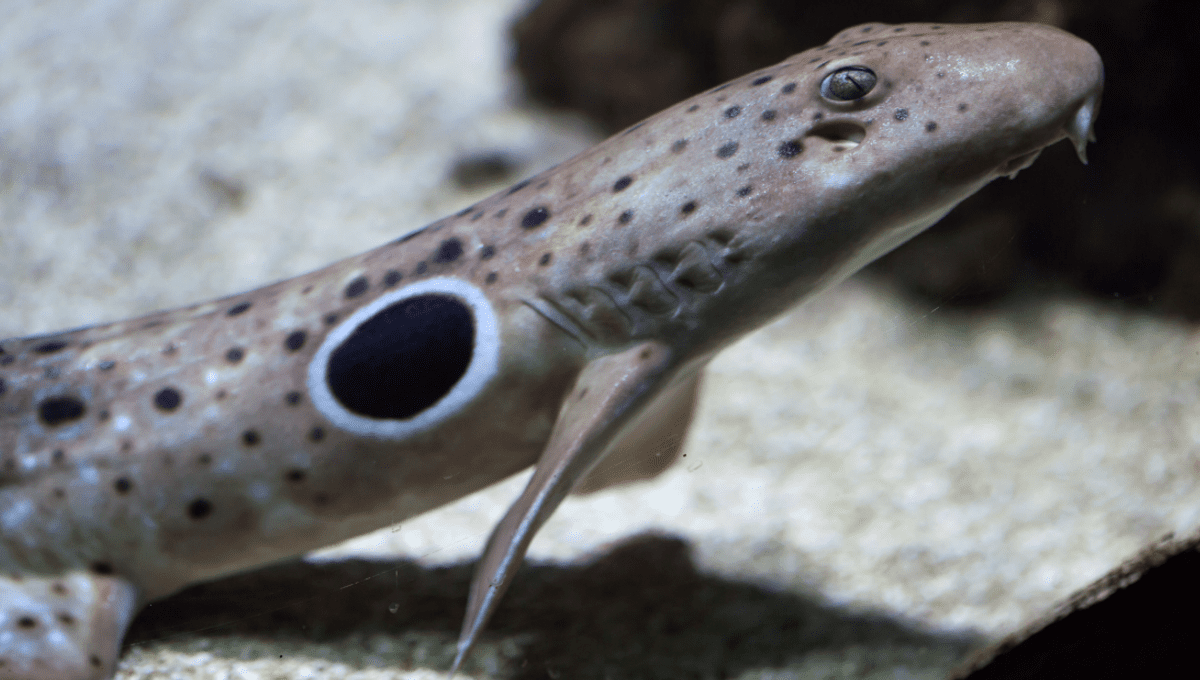
Walking sharks are taking the headlines by storm this year. While Discovery’s Shark Week shared some footage of an epaulette strutting its stuff in Papua New Guinea, new research has investigated for the first time how these animals’ early life stages may influence their locomotion and found that even as ball-bellied babies they are pretty skilled at walking around.
Epaulette sharks are a good model for studying the capacity of marine vertebrates to survive future predictions of ocean conditions under the climate crisis. This is because it’s believed that sometime in the last 9 million years, they evolved to be able to walk along the seabed, reefs, and even on land to access new foraging grounds.
When moving from a submerged spot to terrestrial walking, they naturally experience fluctuations in temperature and oxygen availability, which mirror the expected conditions of future oceans under the climate crisis. Now, a study published in Integrative & Comparative Biology has found that this tolerance even extends to puphood.
When epaulette sharks arrive out of the egg, they have slender bodies with quite bulbous bellies owing to the fact that they retain the yolk sac that kept them going during development. This is an adaptation seen across egged animals (ducks and reptiles do it too), and while it keeps the young animals’ nutrient levels stocked up, it doesn’t necessarily make for the best body type to be skipping between pools.
With this in mind, researchers decided to investigate the tolerance of neonate (yolk-laden) and juvenile epaulette sharks to see if and/or how their walking skills were altered based on life stage. Fortunately for neonate epaulette sharks, it doesn’t seem their more bodacious body plans cause significant problems.
“Through this study, we advanced the knowledge state regarding submerged locomotion in the epaulette shark and found that kinematics were largely unaffected by changes in body morphology that occur during early life stages,” wrote the study authors. “Further investigations on the aquatic and terrestrial gaits used by this species may provide insights into the development of walking locomotion both in and out of water.”
Epaulette sharks are able to walk on land despite not having legs thanks to paired, paddle-like fins, and can withstand the hypoxic conditions associated with a stroll on dry land for over an hour. It’s hoped by better understanding how these animals evolved to get themselves out of sticky situations (like oxygen-poor hot pools), we may be better able to understand the ways in which other marine vertebrates may try to combat the challenging oceanic conditions to come.
“Studying epaulette shark locomotion allows us to understand this—and perhaps related—species’ ability to move within and away from challenging conditions in their habitats,” concluded the authors. “Such locomotor traits may not only be key to survival… but also may be related to their sustained physiological performance under challenging environmental conditions, including those associated with climate change.”
Source Link: Walking Sharks Start Taking Their First Steps Even As Ball-Bellied Babies